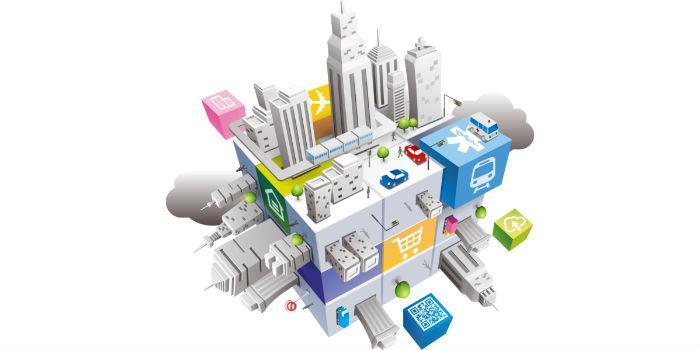 Latin America. The Internet of Things (IoT) is fast becoming the conceptual basis of buildings. IoT is a relatively new term, but this concept is based on a rich history of monitoring, telemetry, sensor-based computing, and automation that has been a part of many industries for decades.
Latin America. The Internet of Things (IoT) is fast becoming the conceptual basis of buildings. IoT is a relatively new term, but this concept is based on a rich history of monitoring, telemetry, sensor-based computing, and automation that has been a part of many industries for decades.
It also builds on another relatively new term for an established, machine-to-machine or M2M capability, but adds the fundamental element of IP-based communications, making IoT instantly compatible with organizational networks and the Internet in general. Therefore, this breakthrough is relatively minor in terms of complexity, but absolutely huge in terms of long-term benefits.
It is now clear that IoT will essentially benefit every telemetry and M2M application, dominating, as a consequence, the smart building opportunity, which, by the way, is huge, involving perhaps billions of new endpoint devices deployed globally over the next decade. Keep in mind, however, that not all of these devices will be of the low demand/low service cycle nature that is often associated with remote sensing and control applications. Many will involve, for example, high-resolution projects and high-speed video surveillance, in addition to continuous monitoring of security conditions. And regardless of the application, adequate bandwidth for low-latency operations is essential to meet both user expectations and application performance constraints.
In addition, of growing interest is the use of wireless networking technologies for the construction (and, again, even the campus) of locating and tracking people and objects as they move through a facility. Wi-Fi and Bluetooth Low Energy (BLE) beacons are already working, with very direct asset tracking to any network. In addition to assisting in the tracking of key personnel, vital equipment are hospitals or assisted living facilities, and the flow of materials in a distribution; Smart buildings can leverage location and tracking information to adjust HVAC, lighting, and other environmental factors automatically, minimizing energy consumption and reducing operating expenses without interfering with staff productivity.
Specific benefits in different market sectors
It's easy to see how the market drivers and technology requirements for smart buildings are already present. Let's take a look at the major market domains and applications to see how each of the components of the smartbuilding strategy benefits.
Our goal, regardless of the mission, industry, or scale of a given deployment, remains to optimize evaluated business outcomes in terms of productivity, cost control, reliability, and seamless scalability.
Smart buildings will soon demonstrate huge benefits in terms of quality end-user experience in comfort, productivity and even give you global competitive advantage. However, it's also important to note that user privacy is still a concern, and unfortunately is often a moving target. This factor is better today thanks to good local policies, agreements between people and together with adequate legal advice.
With that out of the way, let's look at how smart buildings can provide a wide range of benefits in a wide market and application:
Primary, secondary and higher education
Smart building technologies enable greater student mobility and increase their commitment to success, facilitate educational personalization and enhance creativity, while reducing their insecurity. Capabilities such as network-based video surveillance cameras, online help, tutoring and testing, athletics sporting goods, attendance, tracking, environmental control and monitoring, and even ensuring a certain student uses the right bus can be part of a smart school strategy.
Healthcare
No market is more critical than healthcare, with the main overall goals of improving cost efficiency and addressing specialized environmental requirements. Smart buildings here can locate critical equipment, automatically direct and track patients moving from one department to another, integrate clinical area communications with location services, monitor environmental issues, optimize cost-effective operations, and provide data to aid in facility planning in the future.
Retail
The important thing in retail is not to have the products available, but to give an optimal service to the customer, that satisfaction that differentiates one retailer from another. Providing greater physical security, loss prevention, stock and cost management, and self-checkout are all enabled through Smart Buildings.
Manufacturing, transport and distribution
The optimal flow of material depends on location tracking, an inherent capability of the Wi-Fi network in the era of the smart building network. Managing and minimizing costs related to harsh or complex environments will also be important here
Travel & Hospitality
Hotels can improve guest service, the efficiency of their meeting and conference facilities, and environmental costs. Location-based services (including directions and wayfinding) are also vital at airports and other transportation hubs, and many aspects of security so essential to modern travel have also been improved.
Sports and entertainment
Wi-Fi is quickly becoming essential in sports venues, including stadiums. Large hubs want to enhance the game of the assistant experience with personalized content, such as replays, stats, and even augmented reality. Smart building strategies also fit nicely in smaller environments, including auditoriums and theaters.
Enterprises
There really is no business or commercial organization that cannot benefit from the benefits that as discussed in this document and allows you seamless growth over time.
Public sector
Most of the above benefits also apply to government, and enable the concept of smart cities, such as applying a wide variety of network-based techniques for parking management, traffic control, lighting, environmental monitoring, surveillance, and, yes, even smart municipal buildings, again, with better cost-effectiveness and overall quality of life.
Finally, many of the above application areas will additionally require support for outdoor operations and services in some cases. These may include yards, parking areas, campuses, so equipment capable of performing in severe weather conditions may be required.
Conclusions
The trend here is clear: every construction is going to be a smart building. And the key to success is to leverage the network infrastructure with greater coverage and make this a reality. But let's also extend the smart building model with all its benefits to smart cities, to smart homes. "Home Automation" has been on everyone's lips for decades. Successful residential solutions must also be clearly network-based, and we even expect to see many home offices literally connected to your organizations or to your private or public cloud model service provider.
In short, since all the benefits of smart buildings will be applicable to all the organizations, markets, and applications we have discussed in this paper, ultimately, we have only one simple rule: success depends on planning, configuration, installation, and operation in a network infrastructure that is already being worked hard.
*By Carlos Cisneros, Channel Director at Extreme Networks for Latin America.


























Leave your comment